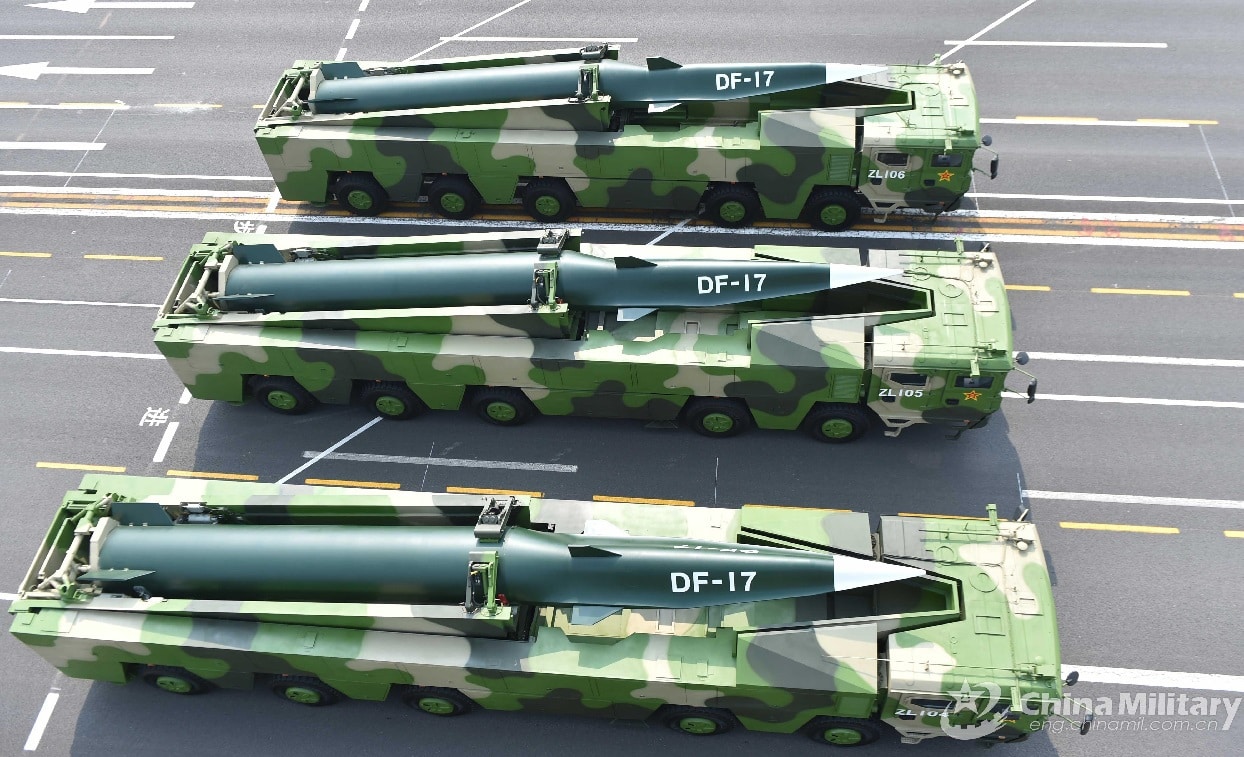According to multiple reports, in August, China tested a hypersonic glide vehicle that orbited the earth before hitting near its target. News of the test of a device that resembles the Fractional Orbital Bombardment System (FOBS) deployed by the Soviet Union landed like a bombshell in US media and if the Financial Times is to be believed, in the US intelligence community.
The test has been met by much confusion in the mainstream media, which finds the idea of a new technology that can carry nuclear weapons to the United States terribly alarming. The fact that China has long deployed ICBMs that can strike the United States has been lost in many of these discussions. As is often the case with new technological developments, some things have changed. More things have remained the same.
Missile Defense
Why would China develop a new system for delivering nuclear weapons to the United States when it already has more than one way to accomplish such a task?
The answer is simple: China takes seriously the possibility that US missile defense technology might render its ICBM and SLBM fleets obsolete. Hypersonic weapons allow China to launch nuclear weapons at speeds and altitudes different than what missile defense systems expect, although such weapons are not inherently immune to interception. A FOBS enables China to strike at the United States from a variety of different directions, forcing the US to increase the size and geographic dispersion of its missile defense installations.
Missile defense is a titanic technological task that the United States has yet to master to a degree that would upset the strategic calculus of nuclear deterrence. At the same time, investment in missile defense has generated impressive technological leaps that have made plausible the idea that a missile defense shield might eventually (perhaps in combination with nuclear, conventional, and cyber-attacks) make it unlikely or impossible for China to threaten the United States with its nuclear arsenal.
But to acknowledge that missile defense is probably technically feasible at some imaginable future point is to miss the main issue. The US may someday be able to reliably destroy an incoming wave of ICBMs and SLBMs by deploying a system of systems that could defend most or all of the continental United States. What the US cannot do is ensure that competitors such as Russia and China will not develop alternative means of maintaining the viability of their nuclear deterrents. In China’s case, this means hypersonic glide vehicles that complicate the job of interception. Russia has resorted to more absurd but no less dangerous weapons such as nuclear-powered cruise missiles and long-range nuclear torpedoes.
Stability
A net assessment of the relationship between strategic stability and missile defense in the 1980s suggested that the US had the opportunity to inflict disproportionate disadvantage on Soviet strategic forces through clever use of missile defense systems. The need for redundancy on the Soviet side might force them to overbuild and overinvest in strategic systems, even if missile defenses were somewhat leaky. Thus, investing in missile defense could take advantage of the asymmetric economic and technological balance between the US and the USSR, and damage the fragile Soviet economy.
This is not a situation that holds in US-China competition. The Chinese economy can handle the strain of building new weapons to strike the US, and China’s defense industrial base seems up to the task of inventing such weapons. The simple truth is this: As long as the United States continues to develop technologies that undermine China’s nuclear deterrent, China will continue to develop capabilities to maintain that deterrent. This includes not only the new hypersonic delivery system, but also expanded ICBM fields and a larger, more sophisticated force of nuclear ballistic missile submarines.
These things are cheaper and easier to build than the missile defense systems that the US continues to invest in. Thus, we have the foundation for an asymmetric arms race. Arms control would seem to be a kind of solution for this problem, but negotiating away or limiting missile defense is simply a non-starter in US politics at the moment. The GOP is deeply committed to missile defense, it has a hold in the defense industrial base and the Pentagon, and the Democratic Party isn’t enthusiastic about expending political capital to kill a system that sounds “defensive” in nature to the general public.
America, Land the of the Vulnerable?
Vulnerability is a fact. The US cannot innovate out of vulnerability. The United States can remain the world’s premier military power, but it could never hope to hold onto the dominance it enjoyed in the 1990s, and it will be destructive to try to do so today. Nuclear deterrence has its virtues; the United States is no more vulnerable to China’s new hypersonic systems than it is to China’s old hypersonic systems, namely its fleet of ICBMs. Engaging in strategic competition entails calmly acknowledging that strategic stability is an important part of any competitive strategy.
Now a 1945 Contributing Editor, Dr. Robert Farley is a Senior Lecturer at the Patterson School at the University of Kentucky. Dr. Farley is the author of Grounded: The Case for Abolishing the United States Air Force (University Press of Kentucky, 2014), the Battleship Book (Wildside, 2016), and Patents for Power: Intellectual Property Law and the Diffusion of Military Technology (University of Chicago, 2020).

